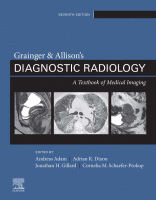Physical Address
304 North Cardinal St.
Dorchester Center, MA 02124

Introduction Image-guided interventional procedures in the spine and the appendicular skeleton are used in the diagnosis and treatment of various medical conditions of benign or malignant origin. The procedures that are described in the present chapter should be performed by…

Introduction The number of venous interventions performed by interventional radiology (IR) is increasing. These increasing demands can be broadly divided into those for venous access, and those relating to the management of deep vein thromboses (DVTs). The latter includes the…

Introduction The genitourinary (GU) tract is especially prone to anatomical and morphological variations, and successful intervention relies on careful anatomical appreciation and planning. This chapter describes the various interventional procedures currently used in the GU tract but commences with a…

Kidney Renal Artery Stenosis Background Stenosis of the renal artery, which is usually focal, can cause a cascade of ischaemic-driven events in the kidney, in addition to other potential insults such as cholesterol embolisation. This can lead to clinical consequences…

Management of Biliary Obstruction Introduction Biliary intervention is not as prevalent as it was 30 years ago because of the advent of endoscopic retrograde cholangiopancreatography (ERCP). Skilled endoscopists can treat the vast majority of patients with biliary obstruction with stents,…

Image-guided drainage is an established technique with a multitude of applications. However, the indications, techniques and management of image-guided catheter drainage continue to evolve. Percutaneous drainage is now the technique of choice for the drainage of abscesses in most locations.…

Image-Guided Biopsy Introduction There is an increasing role for imaging in the planning and performance of biopsy procedures. It is generally deemed unacceptable in modern practice to perform ‘blind’ biopsies on anything other than the most superficial lesions when imaging…

Since the first edition of this textbook, vascular radiology has changed beyond recognition. It was only 30 years ago that the role of radiology in the vascular system was mainly to provide diagnostic images using invasive angiography. Since the development…

Introduction Open surgery for the treatment of aortic pathologies is technically demanding for surgeons and invasive for the patient. It is a major physiological insult often resulting in significant morbidity and mortality. Mortality rates from elective surgery of open thoracic…

Introduction It was Dos Santos who performed the first diagnostic angiogram in 1929 in Lisbon. With the introduction of the Seldinger technique in 1953, the procedure became much safer and was rapidly popularised ( Fig. 78.1 ). Diagnostic angiography was…